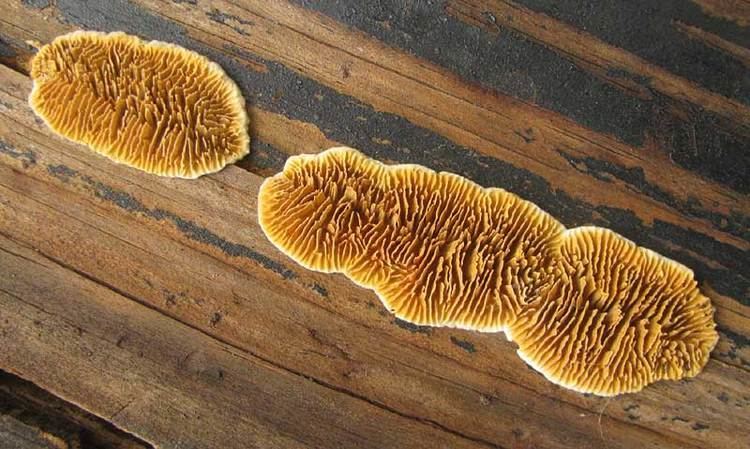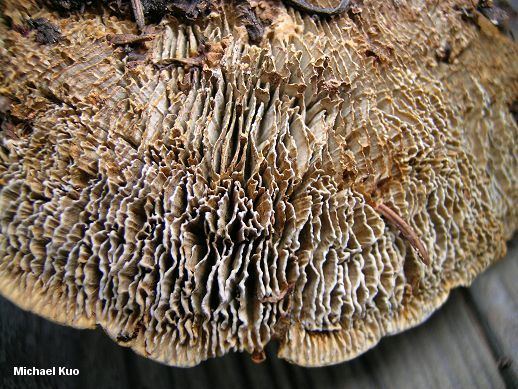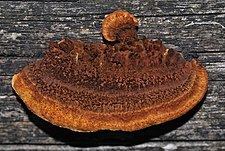Kingdom Fungi Scientific name Gloeophyllum Rank Genus | Division Basidiomycota Family Gloeophyllaceae Higher classification Gloeophyllaceae | |
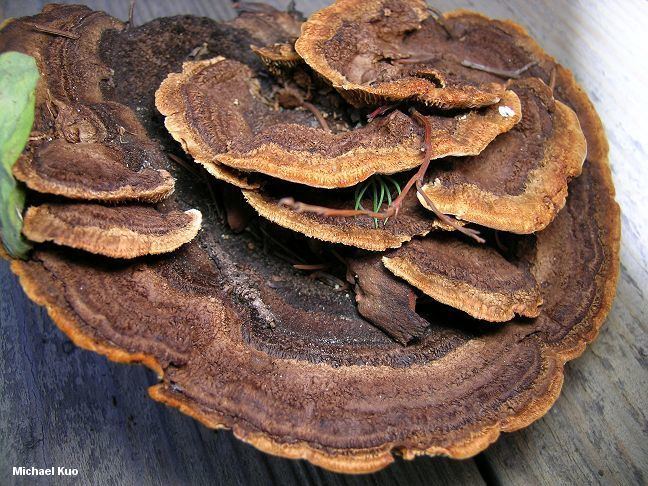 | ||
Similar Gloeophyllum trabeum, Gloeophyllum sepiarium, Gloeophyllum odoratum, Gloeophyllum abietinum, Lenzites | ||
The genus Gloeophyllum is characterized by the production of leathery to corky tough, brown, shaggy-topped, revivable fruitbodies lacking a stipe and with a lamellate to daedaleoid or poroid fertile hymenial surfaces. The hyphal system is dimitic to trimitic. The genus is further characterized by the production of a brown rot of wood. Phylogenetically, it along with several other brown rot Basidiomycota, Neolentinus, Heliocybe, and Veluticeps form an order called the Gloeophyllales.
Contents
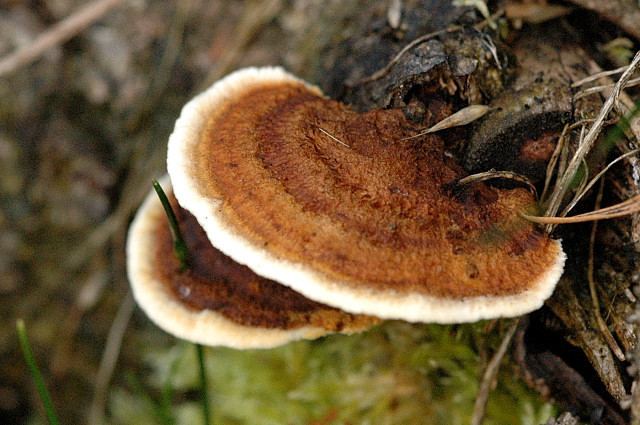
The most frequently encountered species in the Northern Hemisphere is Gloeophyllum sepiarium, which is commonly found in a dried state on both bark-covered and decorticated conifer stumps and logs, timbers on wharfs, planks on unpainted wooden buildings, wood bridges, and even creosoted railroad ties.
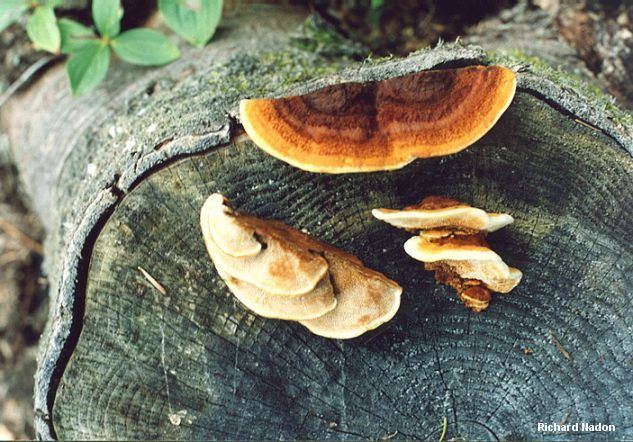
Tr movka plotn gloeophyllum sepiarium
Etymology
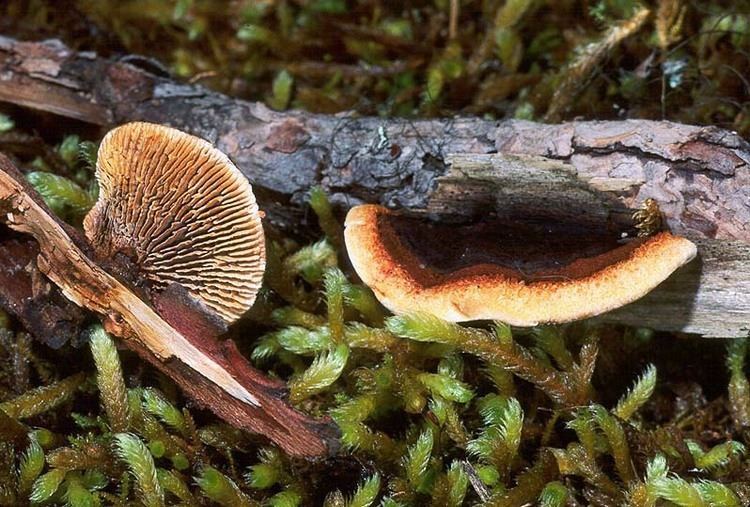
The name Gloeophyllum combines "gloeo-" a reference to anything sticky, and "-phyllum", a reference to the lamellae. It is probably a combined reference to the fact the lamellae in the type species, G. sepiarium, and other original species, appeared to be stuck together forming anastomosing bridges, to the point of forming a daedaleoid pattern. There is nothing sticky about the actual fungal fruitbodies. The name was originally spelled Gleophyllum but was soon changed and the current spelling is sanctioned.
Pharmacology
An extract of Gleophyllum odoratum exhibits high inhibitory activity on thrombin and trypsin as well as cysteine protease.
